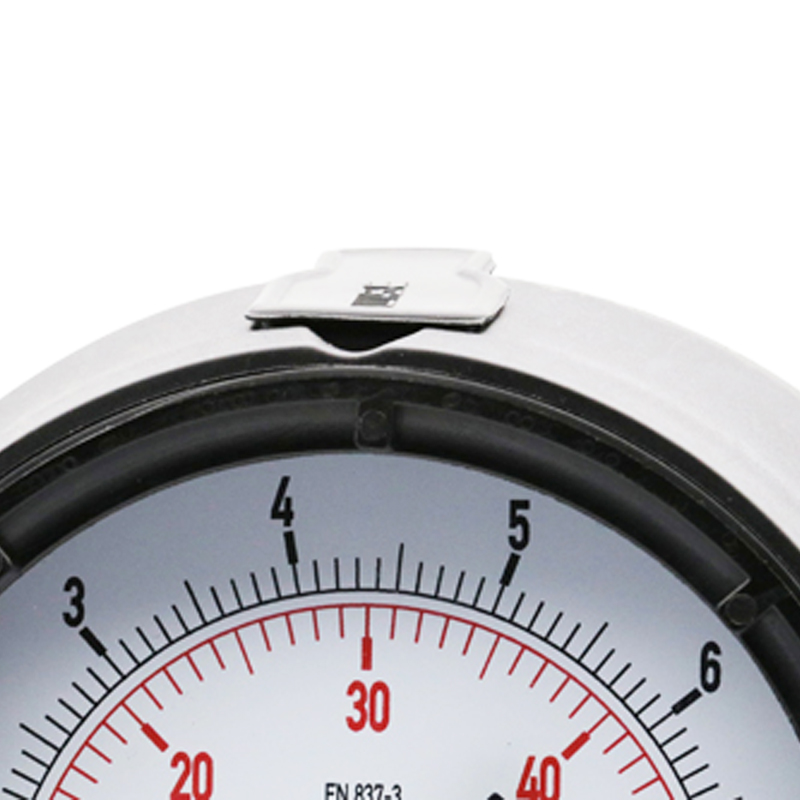
दिसम्बर . 09, 2024 21:31 Back to list
Differential Pressure Gauge Featuring Diaphragm Seal for Enhanced Measurement Accuracy
Differential Pressure Gauges with Diaphragm Seal An Overview
Differential pressure gauges are critical instruments in various industrial applications, measuring the difference in pressure between two points in a system. When combined with a diaphragm seal, these gauges become even more versatile and reliable, particularly in harsh environments. This article explores the working principles, applications, advantages, and considerations of differential pressure gauges with diaphragm seals.
What is a Differential Pressure Gauge?
A differential pressure gauge is designed to measure the pressure difference between two points. It typically consists of two pressure ports, one connected to the high-pressure side and the other to the low-pressure side. The difference in pressure is displayed on a dial or digital readout, providing valuable data for process control and monitoring.
The Role of Diaphragm Seals
Diaphragm seals act as a barrier between the pressure measurement system and the process fluid. They are particularly useful when the process fluid is corrosive, viscous, or contains solid particulates that could damage standard pressure sensors. The diaphragm, usually made from materials like stainless steel or exotic alloys, flexes in response to pressure changes, transmitting the pressure to the gauge while isolating the sensitive components from the process.
Working Principles
The working principle of a differential pressure gauge with a diaphragm seal involves the following steps
1. Separation The diaphragm seal isolates the gauge from the process fluid, preventing damage from corrosive substances or high temperatures.
2. Pressure Transmission When differential pressure is applied, the diaphragm flexes. This flexing is proportional to the pressure differential and transfers the pressure to the measurement system.
3. Measurement The gauge interprets the movement of the diaphragm, converting this motion into a readable pressure difference displayed on the gauge's face.
4. Feedback Loop This information can be used in control systems to optimize processes, maintain safety, or improve efficiency.
Applications
Differential pressure gauges with diaphragm seals find wide applications across various industries, including
- Chemical Processing Monitoring pressure drops across filters and reactors is crucial for maintaining optimal operating conditions. - Pharmaceuticals In highly regulated environments, maintaining sterile conditions is essential. Diaphragm seals ensure that no contaminants enter the gauge.
- Food and Beverage The hygienic design of diaphragm seals is vital for maintaining product purity and quality.
- Oil and Gas These gauges are used for monitoring flow rates and levels in pipelines, helping to ensure that operations remain safe and efficient
.differential pressure gauge with diaphragm seal jah

- HVAC Systems Measuring pressure drops across filters and coils helps in maintaining air quality and efficiency.
Advantages
The integration of diaphragm seals with differential pressure gauges offers several advantages
1. Protection from Contaminants Diaphragm seals help protect the gauge from damaging process fluids, extending the life of the instrument.
2. High Accuracy These systems provide precise measurements, which are crucial for process control and operational efficiency.
3. Versatility Diaphragm seals can handle a wide range of pressures and temperatures, making them suitable for various applications.
4. Reduced Maintenance The isolated design minimizes wear and tear on the measuring components, reducing the need for frequent maintenance and calibration.
5. Hygienic Design In industries requiring strict hygiene standards, these gauges prevent contamination, ensuring product safety.
Considerations
While differential pressure gauges with diaphragm seals offer numerous benefits, certain considerations must be taken into account
- Material Selection Choosing the right material for the diaphragm is crucial. It must be compatible with the process fluid to avoid degradation.
- Temperature and Pressure Ratings Ensure that both the gauge and the diaphragm seal can withstand the operating conditions of the process.
- Calibration Regular calibration is essential to ensure the accuracy and reliability of measurements.
- Installation Proper installation is critical to avoid leaks and ensure that the gauge functions as intended.
Conclusion
Differential pressure gauges with diaphragm seals are essential tools in modern industrial processes. Their ability to provide accurate and reliable measurements while safeguarding sensitive components from harsh environments makes them invaluable in various applications. By understanding their working principles, benefits, and the considerations involved, industries can make informed decisions when selecting these instruments for their specific needs, ultimately enhancing operational efficiency and safety.
-
High-Precision 5 Valve Manifold Differential Pressure Gauge Suppliers
NewsApr.29,2025
-
High-Precision Diaphragm Vacuum Pressure Gauges Manufacturers & Quotes
NewsApr.29,2025
-
Omega Differential Pressure Gauges High Accuracy & Durability
NewsApr.28,2025
-
Low Pressure Differential Pressure Gauges Precision Solutions & Quotes
NewsApr.28,2025
-
Digital Diaphragm Pressure Gaauge Precision Measurement & OEM Quotes
NewsApr.28,2025
-
Differential Pressure Gauge China Price High-Accuracy & Best Quotes
NewsApr.28,2025
